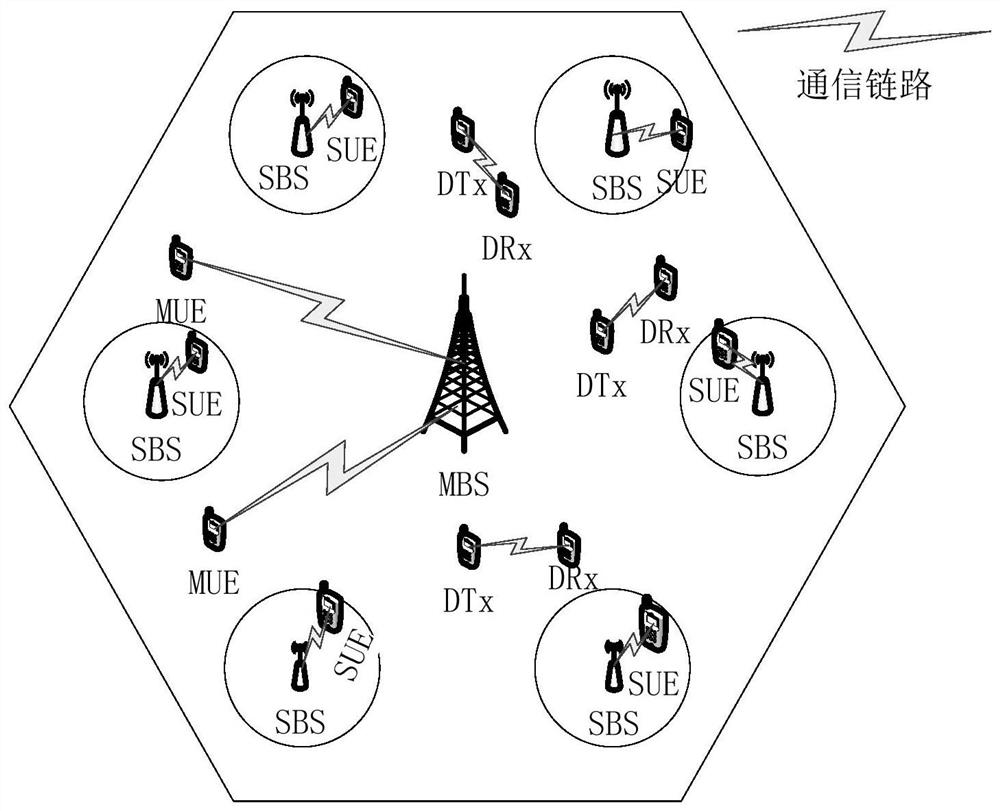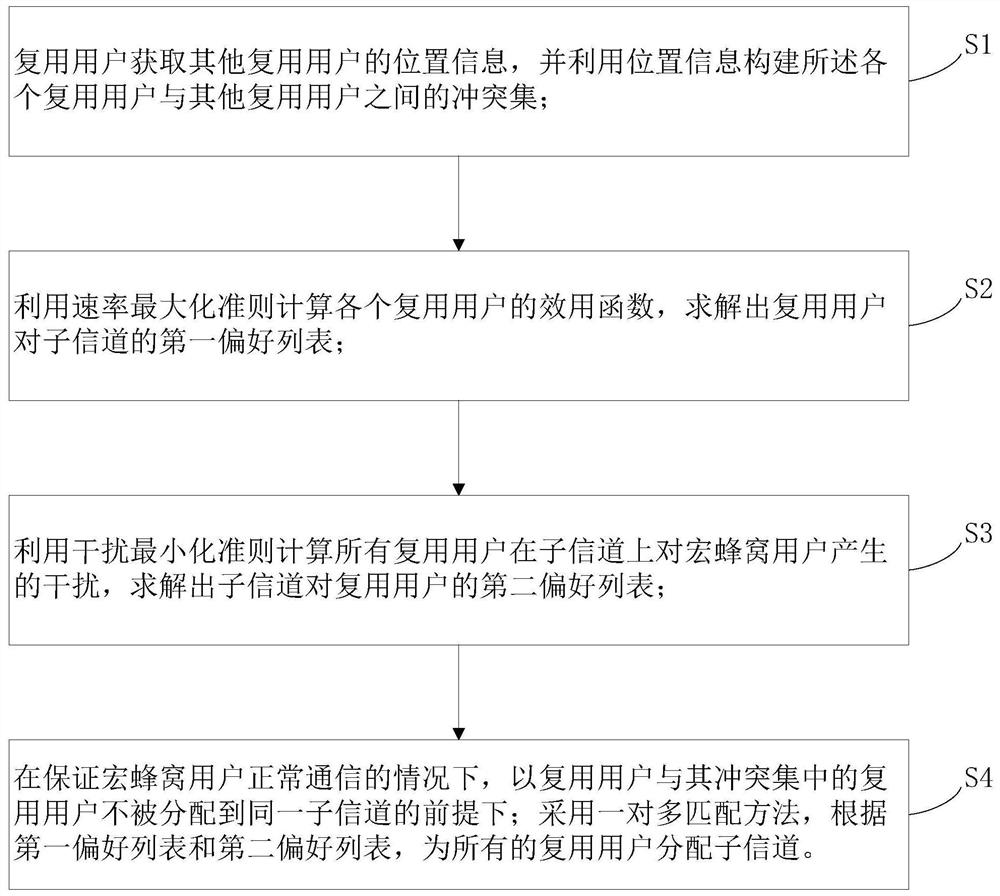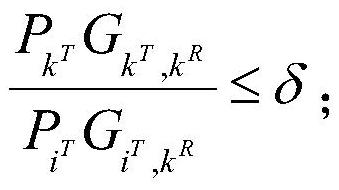Resource Allocation Method Based on One-to-Many Matching in Heterogeneous Networks
A resource allocation, multi-matching technology, applied in location-based services, machine-to-machine/machine-type communication services, advanced technologies, etc., can solve problems such as less consideration of macro-cell user spectrum resource interference management issues, and achieve improved Spectral efficiency and system throughput, reducing computational complexity, and reducing the effect of same-layer interference
Active Publication Date: 2022-05-31
CHONGQING UNIV OF POSTS & TELECOMM +1
View PDF10 Cites 0 Cited by
- Summary
- Abstract
- Description
- Claims
- Application Information
AI Technical Summary
Problems solved by technology
However, there are relatively few studies on the resource allocation problem in the multi-layer heterogeneous network composed of macro cells, Small Cells and D2D. In the existing literature, the research is mainly on the resource allocation problem of D2D users when D2D is introduced into the Macro Cell / SmallCell network. , less consideration is given to the interference management problem when the small cell users and D2D users in the multi-layer heterogeneous network multiplex the spectrum resources of the macro cell users
Method used
the structure of the environmentally friendly knitted fabric provided by the present invention; figure 2 Flow chart of the yarn wrapping machine for environmentally friendly knitted fabrics and storage devices; image 3 Is the parameter map of the yarn covering machine
View moreImage
Smart Image Click on the blue labels to locate them in the text.
Smart ImageViewing Examples
Examples
Experimental program
Comparison scheme
Effect test
Embodiment approach
[0070] S461, traverse all the sub-channels, cyclically execute steps S411 to S451, and obtain the end of this round of matching μ
[0073]
[0075] Those of ordinary skill in the art can understand that all or part of the steps in the various methods of the above-mentioned embodiments can be
the structure of the environmentally friendly knitted fabric provided by the present invention; figure 2 Flow chart of the yarn wrapping machine for environmentally friendly knitted fabrics and storage devices; image 3 Is the parameter map of the yarn covering machine
Login to View More PUM
 Login to View More
Login to View More Abstract
The invention belongs to the technical field of mobile communication, and specifically relates to a resource allocation method based on one-to-many matching in a heterogeneous network, including multiplexing users obtaining location information of other multiplexing users, and using the location information to construct the relationship between each multiplexing user and other multiplexing users. Conflict sets between multiplexing users; use the rate maximization criterion to calculate the utility function of each multiplexing user, and solve the preference list of the multiplexing users for sub-channels; use the interference minimization criterion to calculate all multiplexing users on the sub-channel Interference generated by macro-cell users, solve the preference list of sub-channels for multiplexing users; in the case of ensuring the normal communication of macro-cell users, the premise that the multiplexing users and the multiplexing users in the conflict set are not assigned to the same sub-channel Next; using a one-to-many matching method, according to the preference list of multiplexing users to subchannels and the preference list of subchannels to multiplexing users, assign subchannels to all multiplexing users; the present invention can reduce computational complexity and reduce the interference.
Description
A Resource Allocation Method Based on One-to-Many Matching in Heterogeneous Networks technical field The invention belongs to the technical field of mobile communication, and is specifically a kind of resource allocation based on one-to-many matching in a heterogeneous network method. Background technique In recent years, with the popularization of intelligent terminals, mobile Internet and various wireless services, mobile communication data traffic The number of device connections is exploding, and the demand for wireless network capacity and coverage is increasing. while the traditional macro Cellular networks mainly provide wide-area coverage, which is difficult to meet the increasing shortage of wireless spectrum resources today. long traffic demand. In order to meet the possible needs of future wireless communication networks, deployment in traditional macrocellular networks Small Cell (small cell), and the introduction of Device-to-Device (D2D) communicati...
Claims
the structure of the environmentally friendly knitted fabric provided by the present invention; figure 2 Flow chart of the yarn wrapping machine for environmentally friendly knitted fabrics and storage devices; image 3 Is the parameter map of the yarn covering machine
Login to View More Application Information
Patent Timeline
 Login to View More
Login to View More Patent Type & Authority Patents(China)
IPC IPC(8): H04W72/04H04W72/08H04W72/10H04W4/70H04W4/02H04W72/54
CPCH04W4/025H04W4/70H04W72/0453H04W72/541H04W72/56Y02D30/70
Inventor 袁泉赵瑞雪郭晖董昊罗菊
Owner CHONGQING UNIV OF POSTS & TELECOMM
Features
- R&D
- Intellectual Property
- Life Sciences
- Materials
- Tech Scout
Why Patsnap Eureka
- Unparalleled Data Quality
- Higher Quality Content
- 60% Fewer Hallucinations
Social media
Patsnap Eureka Blog
Learn More Browse by: Latest US Patents, China's latest patents, Technical Efficacy Thesaurus, Application Domain, Technology Topic, Popular Technical Reports.
© 2025 PatSnap. All rights reserved.Legal|Privacy policy|Modern Slavery Act Transparency Statement|Sitemap|About US| Contact US: help@patsnap.com



